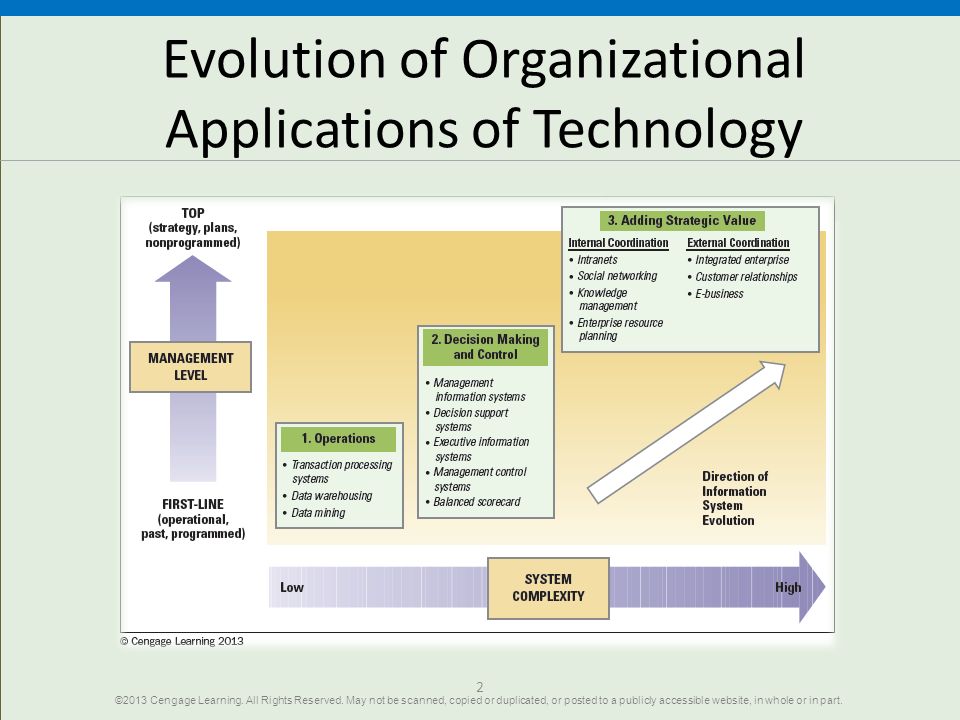IT – Information Technology
Using Information Technology for Control and Coordination
 Photo courtesy of LithoProbeOpens in new window
Photo courtesy of LithoProbeOpens in new window
Information technology (simply known as IT) is the use of any computers, storage, networking and other physical devices, infrastructures and processes to create, process, store, secure and exchange all forms of electronic data. |
Today, IT has become a crucial factor helping organizations in all industries maintain a competitive edge in the face of growing global competition and rising customer demands for speed, convenience, quality, and value.
The primary benefits of IT for companies include its potential for improving decision making as well as for enhancing control, efficiency, and coordination of the organization internally and with external partners and customers. Some organization theorists believe IT is gradually replacing the traditional hierarchy in coordination and controlling organizational activities.
Effectively using IT in knowledge-based firms such as consulting firm KPMGOpens in new window, Amerex EnergyOpens in new window, a brokerage firm specializing in energy resources, and Business WireOpens in new window, which provides business and corporate information, has long been fundamental.
As the following examples illustrate, many organizations have been transformed by information technology (IT).
| IN PRACTICE |
|---|
|
Figure X1 illustrates the evolution of IT.
 Figure X1 Evolution of Organizational Applications of Technology
Figure X1 Evolution of Organizational Applications of Technology
|
First-line management is typically concerned with well-defined problems about operational issues and past events. Top management, by contrast, deals mostly with uncertain, ambiguous issues, such as strategy and planning.
As computer-based IT systems have grown increasingly sophisticated, applications have grown to support effective management coordination, control, and decision making about complex and uncertain problems.
Initially, IT systems in organizations were applied to operations. These initial applications were based on the notion of machine-room efficiency — that is, current operations could be performed more efficiently with the use of computer technology.
The goal was to reduce labor costs by having computers take over some tasks. These systems became known as transaction processing systems (TPS), which automate the organization’s routine, day-to-day business transactions.
A TPS collects data from transactions such as sales, purchases from suppliers, and inventory changes, and stores them in a database.
For example, at Enterprise Rent-a-CarOpens in new window, a computerized system keeps track of the 1.4 million transactions the company logs every hour. The system can provide front-line employees with up-to-the-minute information on car availability and other data, enabling them to provide exceptional customer service.
Midland Memorial HospitalOpens in new window in Texas recently adopted information technology for electronic medical records. The system helped Midland catch up on a $16.7 million coding and billing backlog for 4,500 patient records in only four weeks, a process that likely would have taken six months or more without the system.
In recent years, the use of data warehousing and business intelligenceOpens in new window software has expanded the usefulness of these accumulated data.
Data warehousing is the use of huge databases that combine all of a company’s data and allow users to access the data directly, create reports, and obtain responses to what-if questions.
Building a database at a large corporation is a huge undertaking that includes defining hundreds of gigabytes of data from many existing systems, providing a means of continually updating the data, making it all compatible, and linking it to software that makes it possible for users to search and analyze the data and produce helpful reports. Software for business intelligence, also called analytic software, helps user make sense of all these data.
Through the application of more sophisticated computer-based systems, managers have tools to improve the performance of departments and the organization as a whole. These applications use information stored in corporate databases to help managers control the organization and make important decisions.
Also in this series include:
- Richard L. Daft and Norman B. Macintosh, “The Nature and Use of Formal Control Systems for Management Control and Strategy Implementation,” Journal of Management 10 (1984), 43 – 66

